
Hong Kong’s real-life Isle of Dogs, and the volunteers who help care for unwanted pets left to die
Pets dumped on islands near Sai Kung face death from starvation, lack of water, disease or attacks by feral packs; a group of volunteers tries to help by feeding, trapping and neutering dogs and taking sick ones to be euthanised
In filmmaker Wes Anderson’s new animated comedy Isle of Dogs , Japan’s entire canine population is banished to a fictional Trash Island following a deadly outbreak of dog flu.
A similar scenario is playing out on islands off the town of Sai Kung, in Hong Kong’s New Territories, which have become a dumping ground for unwanted pet dogs. The dogs face a fight for survival against packs of hardy feral ones.
In Anderson’s film, 12-year-old Atari comes to the rescue. In the Hong Kong seaside town, it’s a team of five volunteers.
People who dump the dogs think they will be happy on the island. No they won’t. They have no water, no food.
One is David Roche, 72, a former fund manager and a resident of Sai Kung who discovered dogs running wild on the islands 12 years ago. The kayak enthusiast surveyed eight of the islands closest to Sai Kung town and was shocked to find about 80 dogs living on them.
Some were obviously the feral descendants of abandoned dogs from floating fish farms and piggeries that used to operate on the islands. But a quarter of them, Roche estimated by their condition, were abandoned pets doomed to a cruel death.
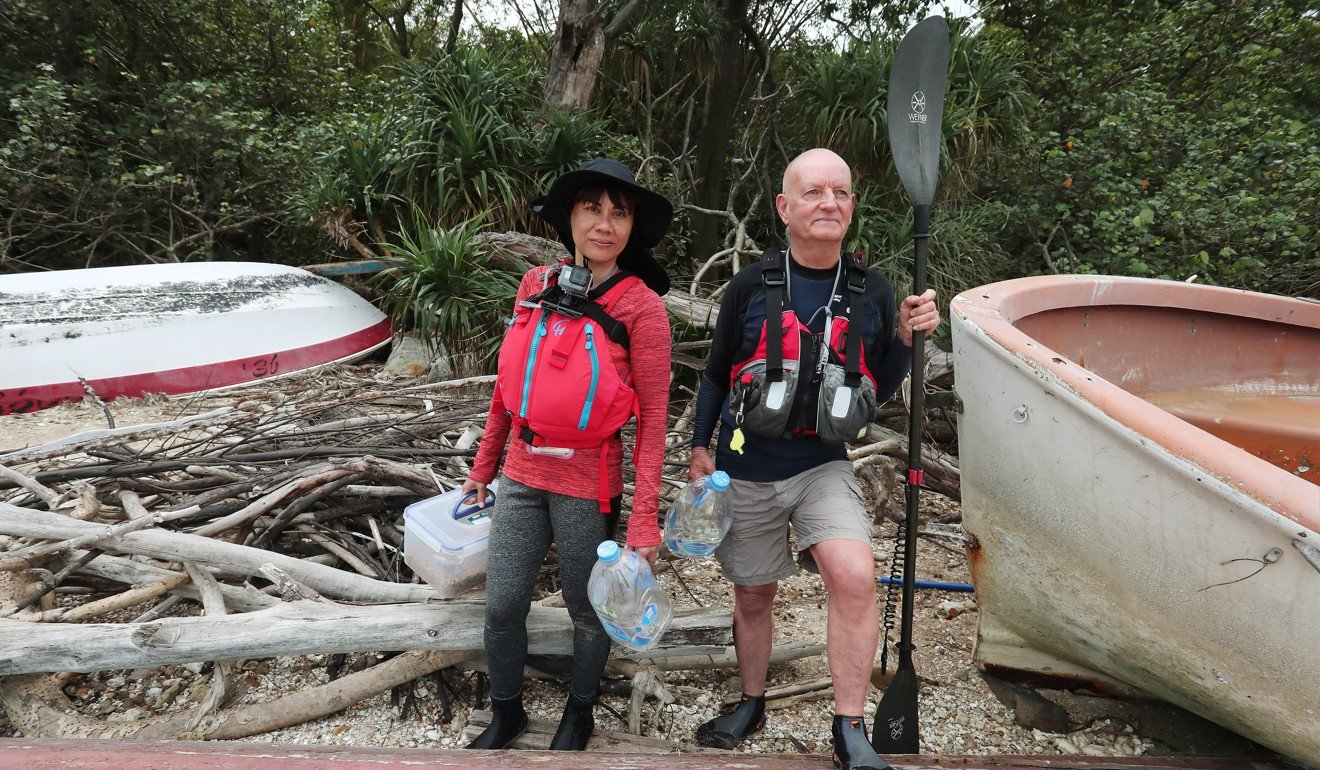
Most dogs that are dumped will die within seven or eight days, Roche says. “They can’t survive here,” he says, without naming the islands in case it encourages other owners to abandon pets on them.
“People who dump the dogs think they will be happy on the island. No they won’t. They have no water, no food. They have tick and mosquito diseases, and they get attacked by other dogs.”
Roche recalls a particularly distressing case he came across a few year ago when he found a dog with terminal cancer that could barely move because its hind legs were paralysed.
Retiree jailed two months for killing stray dog with poison-laced meat
“It was an act of extreme cruelty. They didn’t want to pay for the vet, so they dumped it on the island,” says Roche. Fellow volunteer Debbie Chow, the founder of NGO Home Dog Home, took the dog to a vet, who eventually euthanised it.
Chow is convinced pet owners choose the islands as dumping grounds because “the dogs cannot leave … so they cannot possibly find their way home”.

Concerned that the dog population on the islands could spiral out of control, Roche and Chow took the problem into their own hands by capturing puppies and removing them from the islands, and having older dogs neutered. In 2009 alone, they found homes for almost 200 rescued puppies. Adult dogs are not so easy to deal with, though.
“It’s a nightmare, because the dogs that are dumped have been betrayed. They are completely confused and they will bite you. They are afraid of everybody now,” says Roche.
Desexing scheme for stray dogs has failed in Lamma village
Although some of the adult animals can be rescued and rehabilitated, that is not the case with feral dogs that have lived on the islands for generations, which have wilder temperaments. To deal with this problem, the volunteers applied the trap-neuter-return principle – a method that has proven useful in controlling stray dog populations in Britain and Denmark.
After sedating the dogs using tranquilliser darts, or luring them into food-baited traps, they ship them to veterinary clinics for vaccination, microchipping and neutering. After the dogs recover from surgery, they are returned to the islands.
As a result of their actions, the number of dogs living on the islands has dropped dramatically.
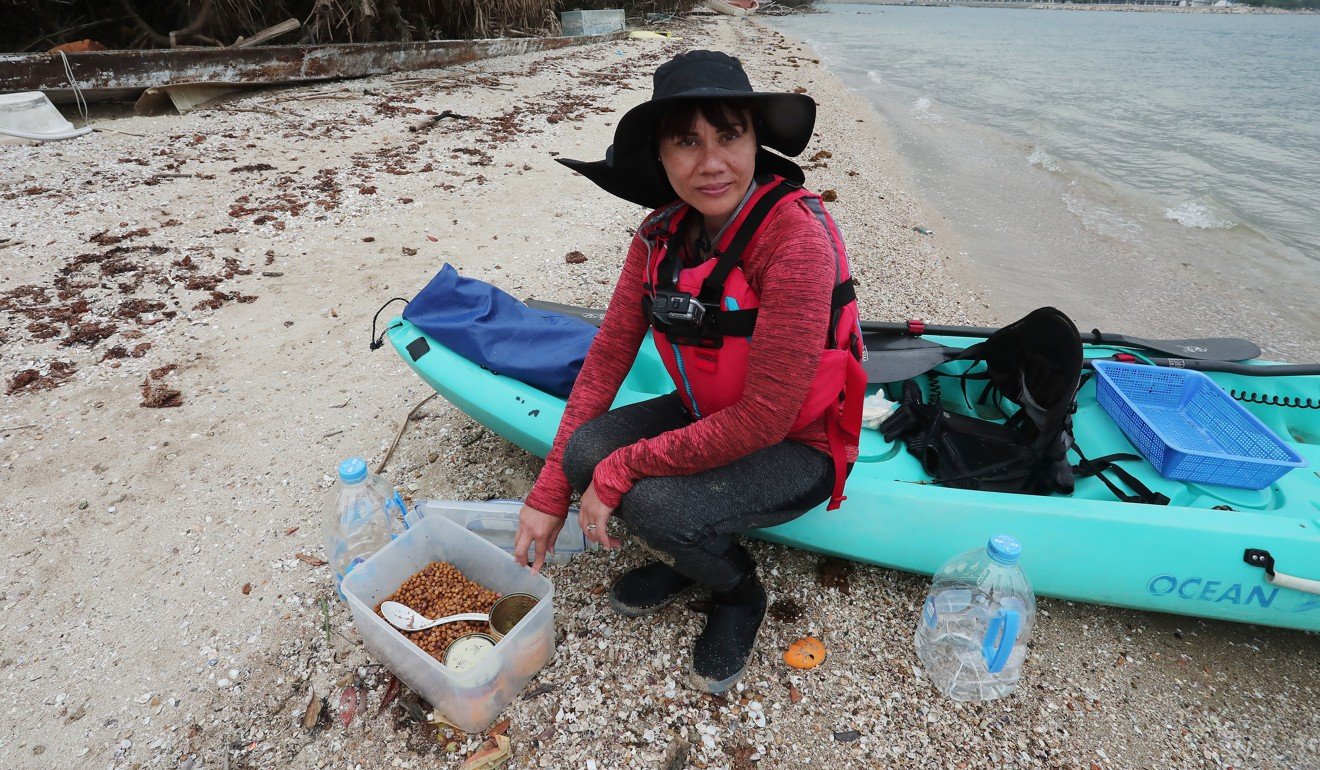
For more than a decade now, Roche, who runs his own financial strategy company from home, has paddled out to the islands three times a week, delivering food and fresh water. He was joined by his wife, Mary Jean Gaje, a kayak instructor, six years ago. The couple are currently feeding eight dogs on two islands, and visit another two islands to keep an eye on dogs there.
“We go out in all conditions, anything below typhoon signal No 3,” says Roche. Each round trip takes five to seven hours.
Woman faces fines after saving stray dog
The couple take turns with two other volunteers, Ah Kwok and Ah Wing, so the animals are properly fed each day. The total cost of the exercise, including dog food and medical care, is HK$140,000 (US$18,000) a year, and comes entirely out of Roche’s pocket.
On a recent visit Little Boy, a black mongrel, comes running onto a rocky beach, barking at the kayak long before Roche and Gaje reach the shore. Meanwhile Fifi, an older animal, hides in the bushes. Roche suspects Fifi only has a couple more months to live. When she can no longer move, he plans to take her off the island and have her euthanised.
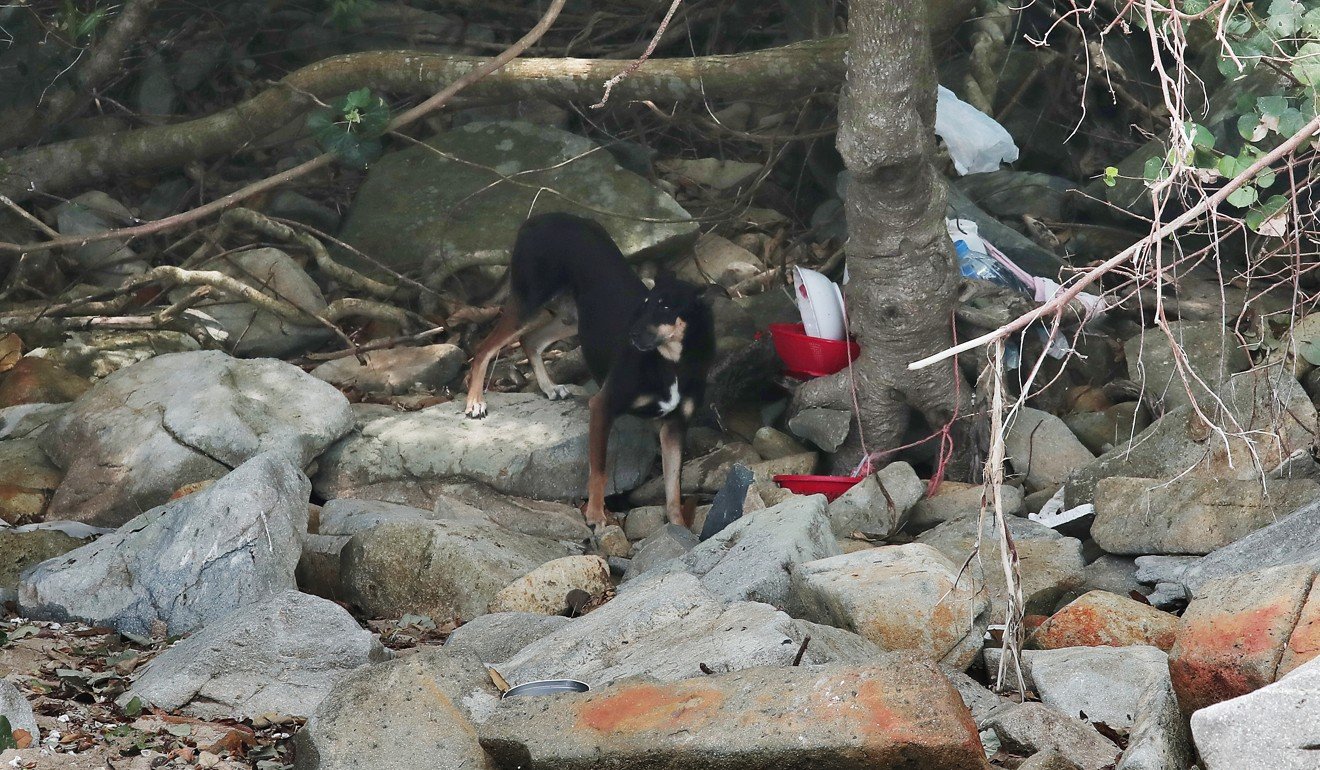
“These are not dogs you can take off [the island] and take home into a flat. They are wild dogs. They won’t like it, and you won’t like it,” he says. It was better to leave them alone until they were old or ill, then have them euthanised.
Are Hong Kong’s laws on animal abuse and neglect outdated?
Roche says there are also dogs on the other two islands they visit on their rounds, but they are self-reliant, feeding on baby wild boar and snakes. Still, they check on them regularly. The volunteers also monitor four other islands to make sure no other unfortunate pets have been dumped.
Roche threatens to prosecute any pet owners he catches in the act of dumping animals on the islands.
Fortunately, he says, it has been about five years since he last came across a new case. He attributes this to a change in cultural attitudes towards dogs.
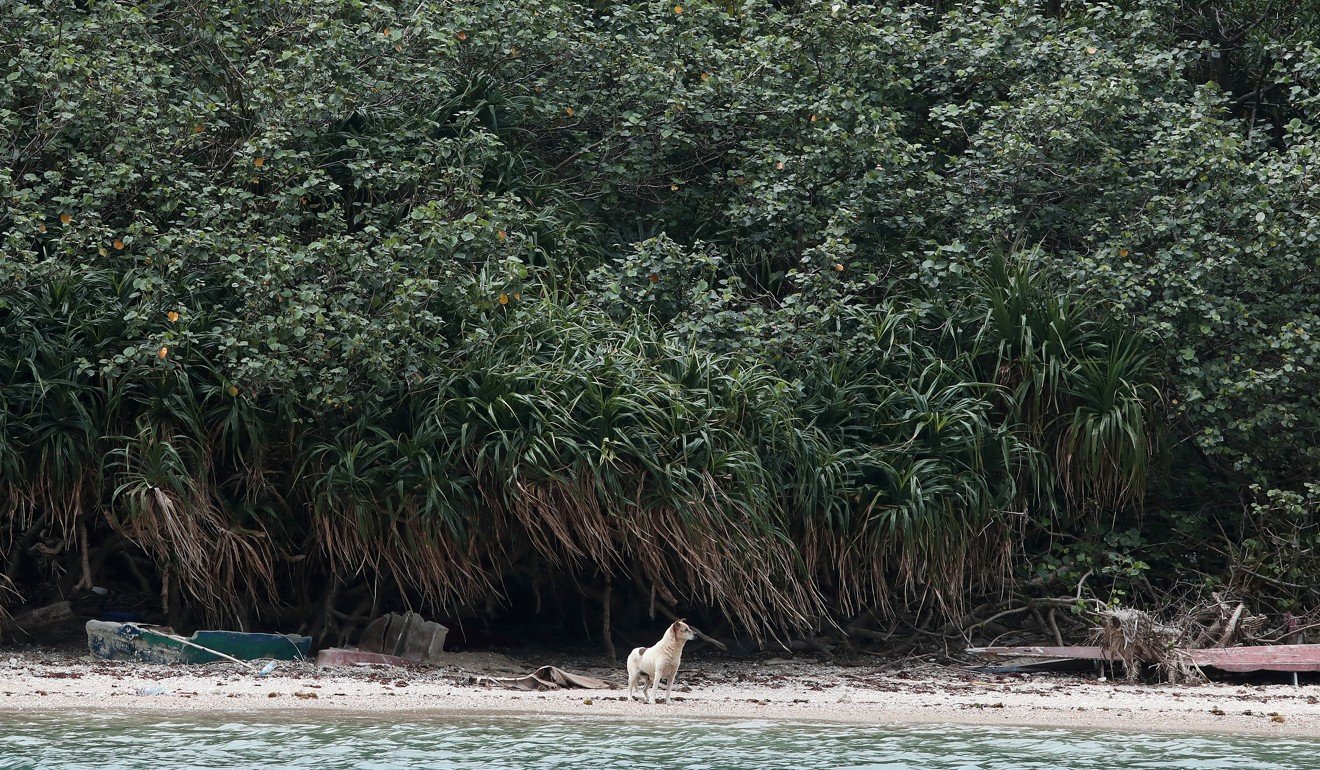
“When we came to live here in 1968, the attitude towards dogs was like the attitude towards rats. But if you go to the seafront in Sai Kung on weekends now, there are hundreds of dogs. People have pet dogs in prams and being carried around,” he says.
Chow, on the other hand, says she is still regularly alerted to the plight of an animal wandering the streets. Instead of making a snap judgment (“maybe they just got lost”, she says), Chow says she will usually try to track down the owner through information on the animal’s microchip, and return the dog to them.
A sad end: more than half of stray dogs caught in Hong Kong are euthanised
Chow says she sometimes comes across feral dogs, too, and tackles the problem the same way as they would on the islands, resorting to the trap-neuter-release principle. She says it’s a more humane and effective practice than the government’s catch-and-kill policy.
This feral population, if they end up in the government management system, would end up being euthanised and killed for population control
According to statistics from the Agriculture, Fisheries and Conservation Department, the authorities killed 1,814 feral dogs and 449 cats in 2016.
Last month, Chow and several other volunteers made three boat trips to an island near Sha Tau Kok – a town straddling the Hong Kong-China border in a restricted area, entry to which requires permits – to catch six dogs roaming there. They released them two weeks later after paying for vets to neuter the animals.
Despite their dedication, Chow feels that responsibility for these dogs cannot be left solely to civil groups and that the government should take the lead in launching trap-neuter-release programmes to control populations of stray animals.
“There is only so much a housewife like me can do,” she says.
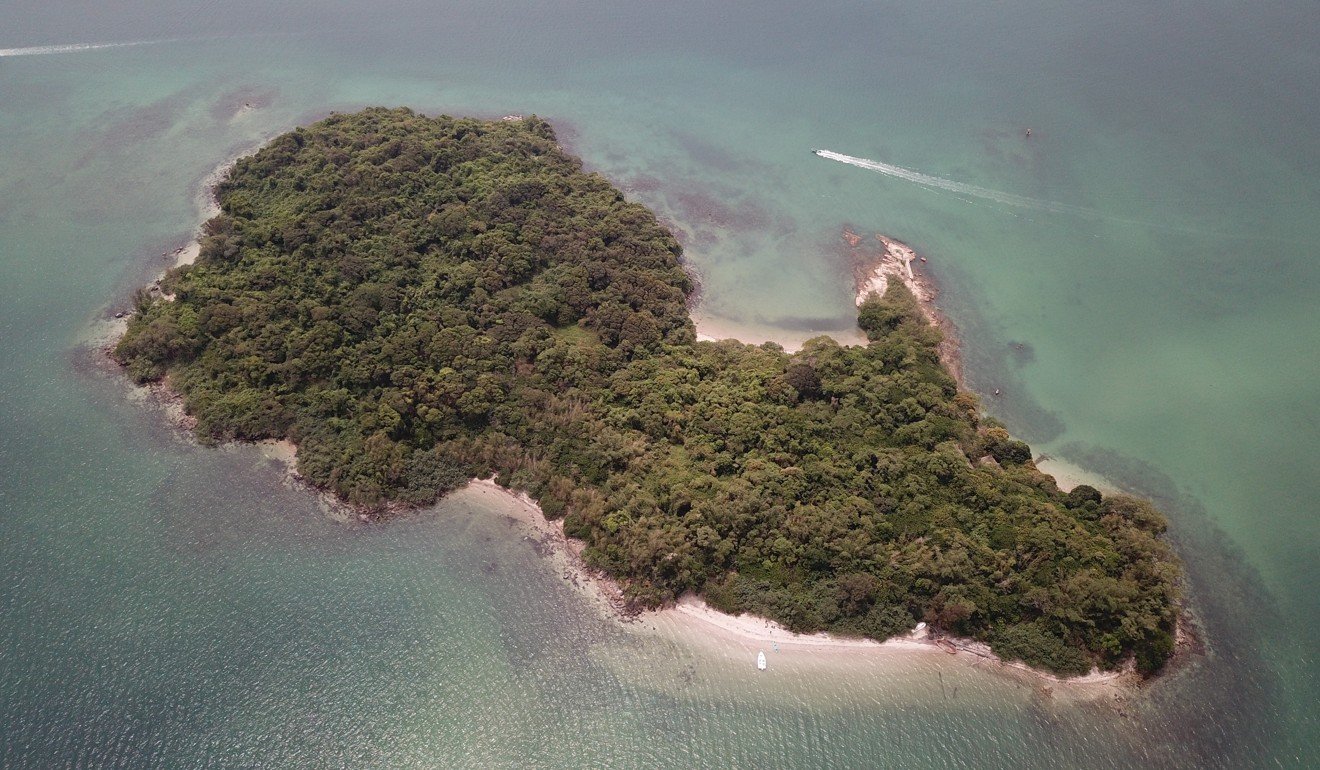
The government has approved only two official trap-neuter-release trials, both in 2015, conducted by the Society for the Prevention of Cruelty to Animals (SPCA) in the Islands district, and by the Society for Abandoned Animals in Yuen Long, another New Territories district.
In addition to measuring the effectiveness of the trials in terms of population control, the organisations looked at factors such as the animals’ rate of reproduction, the death rate among kittens and puppies, and the welfare and health of the animals.
Trap-neuter-release programmes may not be suitable in every situation, says Dr Fiona Woodhouse, the SPCA’s deputy director of welfare. For example, returning wild dogs to an urban environment could be a nuisance to the community. When conducting its trial, the organisation assessed if dogs were a risk to the public, she adds.
Neuter-and-release programme for stray dogs given official go-ahead
Woodhouse thinks the government should adopt a combination of methods, including trap-neuter-release, to address the problem of feral animals.
“This feral population, if they end up in the government management system, would end up being euthanised and killed for population control because they would not be found suitable to be rehomed,” she says. “Ethically, we prefer non-lethal population control … it’s really for the welfare of the animals and public health as well.”
In the meantime, Chow and Roche will continue their dog rescue mission.
“I am only doing this because I have to. If I don’t do it, they will die,” says Roche. “And they have the right to live.”

